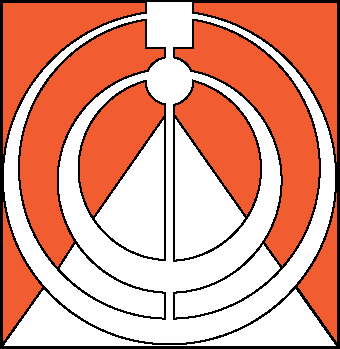Making Genetics Fun with Snap Blocks and Popsicles
Monday, July 29, 2019
The seventh-grade science teachers that pilot tested Mi-STAR’s Unit 7.6, Inheritance of Traits in Humans, say it has a lot going for it: popsicles, microscopes and a brother-sister spat. But the most intriguing part of all may be that it’s about us.
“The kids were engaged right away,” said John Kowalski, of White Pine Middle School in Saginaw. “It poses a lot of questions about them personally, about their genetics, and how that relates to their family. That brings out their curiosity.”
Like all Mi-STAR units, 7.6 begins with a challenge for students to solve. In this case, Becky is mad at her brother, Joe, because he keeps ruining their cherry popsicles by taking a single bite and putting them back in the freezer. “Joe doesn’t like cherry popsicles—he likes lime,” says Lori Hall, who teaches math and science in Willie E. Thompson Middle School, in Saginaw. “But he can’t tell the difference between lime and cherry just by looking.”
As it turns out, Joe has red-green color blindness. (“I don’t know how the Mi-STAR folks come up with these ideas,” Hall said.) That trait launches the class’s investigation into the mechanisms of inheritance, genes, chromosomes and proteins. Students get to look at cells under microscopes, build “proteins” using snap blocks and experience their own genetic differences by tasting PTC, a harmless but bitter chemical that only about 70 percent of the population can sense.
Getting kids engaged in science can sometimes be an uphill battle. “But it was clear from the beginning that virtually all my students were putting a lot of thought into this unit,” she said. “Before the pilot, some of them were giving me two- or three-word answers on their tests, and now I’m getting two or three sentences. Their growth during this experience has been amazing, and I am so proud of them.”
Zachary Freeman, of Marshall Greene Middle School, in Birch Run, had a similar experience. “Not everyone will be an A student, but they are all trying, asking questions, talking to you,” he said. “More than once, I had to say, ‘Let’s get through this lesson and see if we have time at the end.’ Conversations would go off the rails fast, but in a good way.”
Kowalski agreed. “I think the biggest value was the discovery questions at the end of every lesson,” he said. “My students were so curious, they were asking questions that we weren’t ready to answer yet. Then, as they got new learning, we’d go back to it. They really wanted to challenge themselves, to get this problem solved.”
Freeman was particularly impressed by the unit’s unconventional approach. “It worked really well,” he said. “My expectations were greatly exceeded. Instead of attacking the concepts using Mendel’s Punnett Square, 7.6 emphasizes that proteins affect the actual trait,” he said. “We didn’t have to dive into dominant and recessive genes, which was good, because the more we learn about genetics at this level, the more we realize that proteins play the greater role.”
Piloting a new unit inevitably involves some rough spots, which isn’t necessarily a bad thing. “The way it was set up, for awhile my kids thought that every trait was carried on the XY chromosome,” Hall said. “That was a challenge we had to overcome, but it led to some good conversations. For me, it was great hearing kids figure out what was going on. It helped me understand their misconceptions and reasoning processes.”
All three of the piloting teachers are sold on the Mi-STAR curriculum. “I’ve gotten to meet amazing people from other districts and get all kinds of good ideas,” said Hall. “It’s very invigorating working with teachers from other districts, building on their solutions, and the online meetings have been really useful.”
Freeman had already incorporated modeling and discussions in his classes before he taught his first Mi-STAR unit last year. Even so, he said, “my first go around I felt lost in the weeds.” Then he participated in a professional learning experience that involved writing a new unit. “That’s when I developed a much greater respect for what Mi-STAR does,” he said. “The lessons are so in depth and cover so many things. Yes, it’s challenging for teachers to look at teaching in a different way, but it’s taught me to be comfortable being uncomfortable, and that’s good.”
Kowalski is a Mi-STAR veteran; he helped write one of the units and has taught several others. “There’s a bit of a learning curve, but once you try it, it’s like, wow, you realize this is how you should teach,” he said. “Now I mimic the Mi-STAR way in the other curriculum I use, with Unit Challenges, bubble maps and unit summary tables. My kids don’t know the difference.”
While 7.6 may be Kowalski’s favorite, other units also inspire his students, including Unit 7.1, Off the Energy Grid. “For our county STEM Fair, one of my kids wanted to create car fenders that could power an electric vehicle,” he said. “The battery charge in electric cars doesn’t last long, so he wondered, why can’t we incorporate a wind generator to charge the battery? And he’s a seventh grader.
“Mi-STAR is all about the 21st century problems that students will have to deal with to help our future, and it’s giving students the tools and the confidence that they can solve those problems,” he added. “That’s really the greatest thing about Mi-STAR.”
GET Mi-STAR NEWS BY E-MAIL!
Copyright © 2025 Mi-STAR
Mi-STAR was founded in 2015 through generous support provided by the Herbert H. and Grace A. Dow Foundation. Mi-STAR has also received substantial support from the National Science Foundation, the MiSTEM Advisory Council through the Michigan Department of Education, and Michigan Technological University.



















